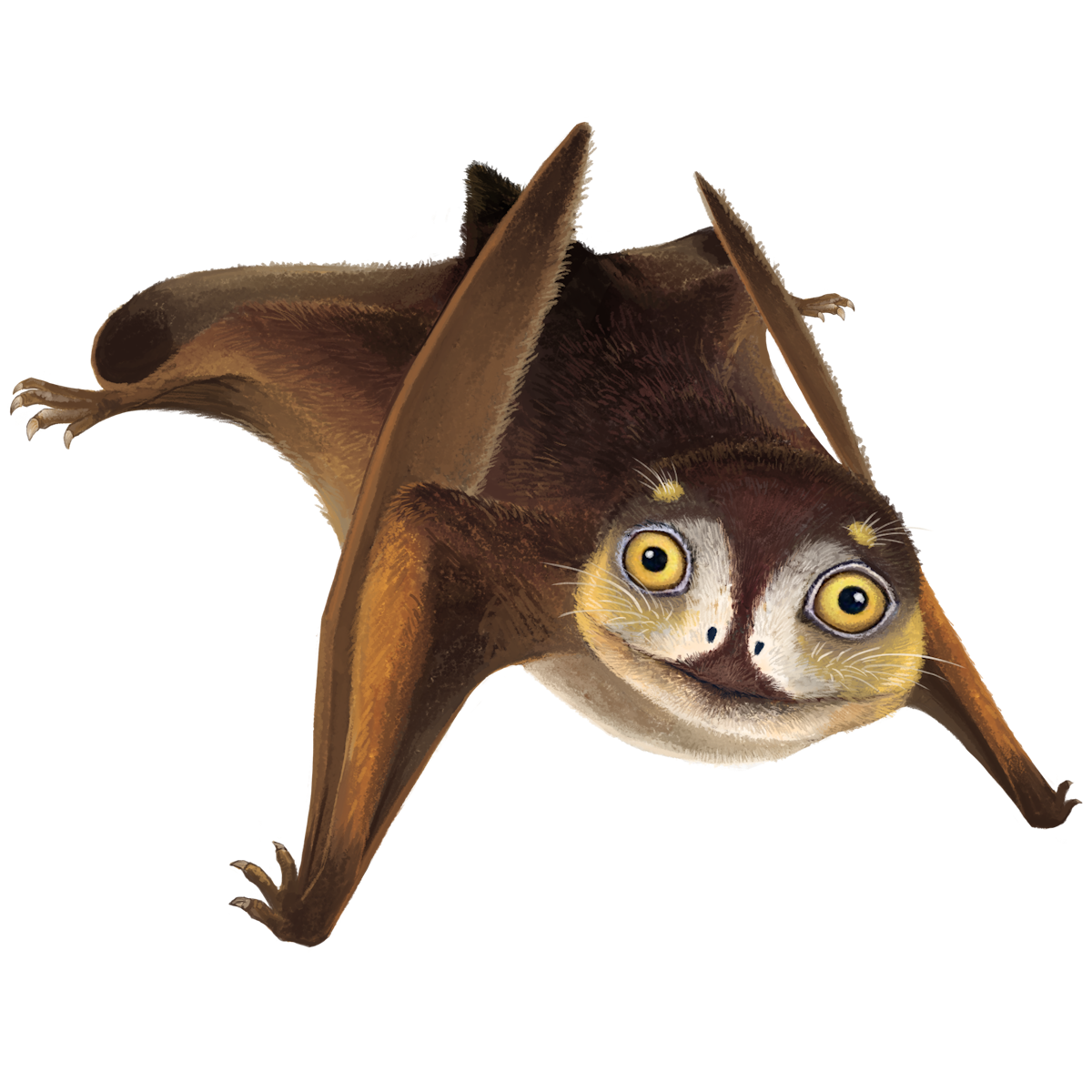Sinuiju Anurognathid
Family

Anurognathidae


Family

Anurognathidae

In 2009, paleontologists Ke-Qin Gao and colleagues briefly described and illustrated the skeleton of a small pterosaur found near the town of Sinuiju, North Korea, very close to the Chinese border. It was discovered in rocks of the Sinuiju Series, deposited in the Early Cretaceous approximately 125 million years ago.
The specimen is preserved on its belly with its wings folded close to its body. It preserves almost the entirety of the skeleton except the feet, the end of the tail, and the ends of both wing fingers. The skull is crushed and difficult to interpret in detail, but it was clearly wide with a short snout. The neck was especially short, being less than the length of the skull. This pterosaur was about the same size as a city pigeon, with a wingspan estimated to be 80 cm (32 inches).
This specimen belongs to the Anurognathidae, a group of small insect-eating pterosaurs. Anurognathids are characterized by possessing wide skulls with short snouts and large eyes, fairly short necks, and short tails. Anurognathids have wings that allowed acrobatic flight and are thought to have been aerial hunters of insects. They were quite similar to living swifts, swallows, and nightjars among birds, as well as bats.
This specimen comes from the same locality that produced the “North Korean Archaeopteryx,” for many years thought to represent specimens of the Late Jurassic bird otherwise only known from Germany. Proper examination of those specimens has shown that they actually belong to confuciusornithid birds, otherwise known only from the Lower Cretaceous Yixian and Jiufotang formations in nearby Liaoning, China. The confuciusornithids, as well as the presence of a characteristic combination of fish, crustacean, and insect species found only in the Yixian and Jiufotang Formations shows that the Sinuiju Series was deposited at the same time. Additionally, it’s thought that the Sinuiju Series represents the easternmost extent of the Jehol Biota, the Early Cretaceous ecosystem famous for its exquisitely preserved feathered dinosaurs in northeastern China.
The Sinuiju anurognathid is the only anurognathid specimen that is definitively known from Cretaceous rocks. One species of Dendrorhynchoides, D. curvidentatus, was initially thought to be from the Yixian Formation, but another species of Dendrorhynchoides, D. mutoudengensis, is known from the Middle Jurassic Tiaojishan Formation, and it is now assumed that D. curvidentatus was initially misdated.
Geological Age
Early Cretaceous


